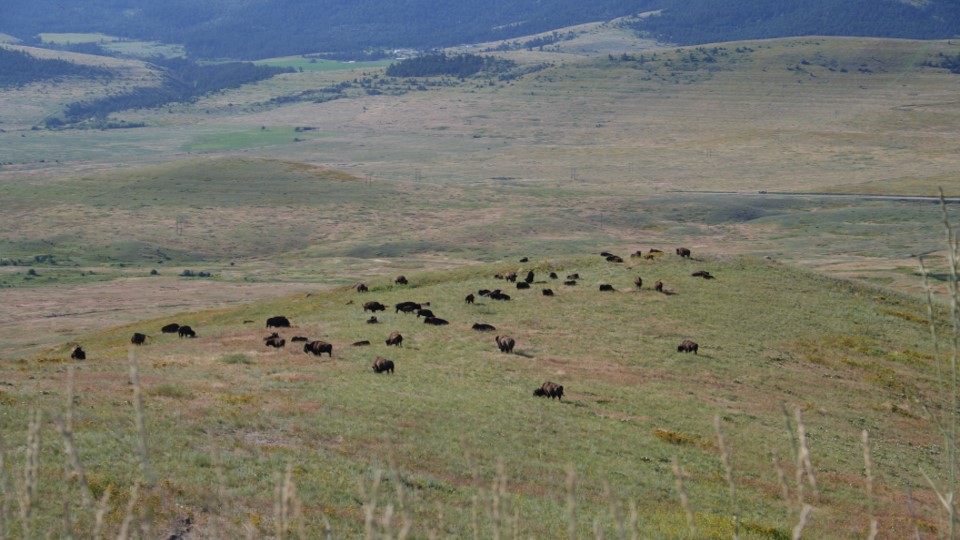Spatial structure of disease transmission across an ungulate community
Using species distribution models to map wildlife disease

Many parasites of concern for human and wildlife health are shared by a community of host species. In order to understand the transmission of parasites such as these we have to move beyond the typical one-host-one-parasite paradigm and consider a community of host species which transmit parasites to both conspecifics and heterospecifics. All species in a community, are not, however, created equal.Some contribute substantially more to transmission, both within a species and between species, than others. Our work aims to (i) identify these transmission dominant species, and (ii) test whether and how the identity of transmission dominant species varies through space and across parasite species.
Ungulates and their parasites on the National Bison Range
We use an ungulate community on the National Bison Range, in Montana, to address these general questions. The National Bison Range is home to one of the largest managed herds of American bison in the world. A number of other ungulate species are also found across the range. Because of the biolgical similarity of these Species they share a number of different gastrointestinal nematode parasites. These parasites are largely environmentally transmitted and generrally follow similar life cycles. Eggs are shed by infected hosts in their feces, from adult nematodes in their digestive tract, and infectious stages are subsequently ingested by other host individuals, infecting them.
Measuring transmission dominance
We use a combination of genetic identification of larval worms and fecal egg counts to identify which species were shedding which parasites and how much they were putting out into the environment. We then aimed to identify transmission dominant species at the scale of the entire Range and at a much smaller spatial scale. While transmission dominant hosts are easy to identify at the rangewide scale, we find, perhaps unsurprisingly, that host transmission dominance varies from parasite to parasite. When we rescale a host species transmission according to their relative use of space across the range, it becomes obvious that transmission dominance varies substantially through space, even for parasites with a single, clearly transmission dominant host at the range-wide scale. I conducted this rescaling using species distribution models of each host species, models previously developed in collaboration with my co-PI John Drake.
While essentially ready for primetime, we're waiting to publish this work in anticipation of a final metric of species-to-species transmission dominance. This metric uses species Distribution overlap to identify which hosts are most dominant in transmission of certain parasites to other hosts. Under many circumstances this represents conspecifics but variation in range overrlap and host sheddding rate are likely to result in some interesting surprises here. As soon as my time commitments to dissertation relevant research and funded projects allow I look forward to finishing up this work!